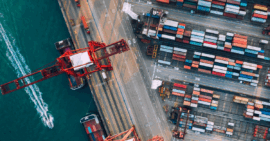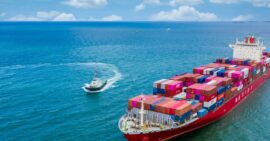If you’re exporting goods across the world, you would know all about the power of Harmonized System (HS) codes. It is a globally accepted classification tool for international trade to identify, monitor, tax and control goods.
Those HS codes can attract massive duties, depending on the product agreements between trading countries, hugely impacting your landed costs and profitability. So, how do you minimise those duties and control which ones apply to your goods? Enter free trade agreements (FTAs) also known as Economic Partnership Agreements (EPAs) in Japan.
How RCEP will change the global trading future for Japan
Let’s look at Japan. In fact, let’s look at importing a t-shirt to Japan. Without using an FTA, importers have to pay a standard 10.90% duty to import the overseas t-shirt to Japan.
On the other hand, accessing let’s say the ASEAN-Japan Comprehensive Economic Partnership (AJCEP) Agreement, gives ASEAN member countries preferential tariff treatment. This allows importers of, to continue the example, the t-shirts to pay 0% duty on t-shirts exported to Japan from any of the ASEAN countries.
With the recent ratification by both China and Japan of the Regional Comprehensive Economic Partnership (RCEP), it’s a whole new ball game. The opportunities abound for this upcoming FTA, one of the world’s largest, with duties saved on HS codes across its 15 Asia-Pacific member countries – that account for about a staggering 30% of global GDP. For Japan, this is the first duty-saving relationship with China and Korea, and the possibilities are ground-breaking.
“From Japan’s point of view, this agreement is historic. These savings costs will be enjoyed by many Japanese companies and we can expect the trading activity not only to grow but to be smoother. We can now look forward to a seamless relationship with China and Korea in terms of manufacturing and supply.”
– Kaoru Morishita, Proposition Lead – ONESOURCE Global Trade at Thomson Reuters in Japan
More than savings benefits – why an FTA strategy is needed
But Kaoru stresses that taking advantage of these duty-saving opportunities requires companies to be strategic. He explains that The Analyzer tool featured in Thomson Reuters’ ONESOURCE Global Trade Management solution will show you the comparative costs of importing or exporting your product to or from selected countries, based on the relevant HS code and the applicable FTAs. The ONESOURCE Global Trade Management solution does all of this within seconds.
Under RCEP, however, the savings to be reaped from an export relationship with key trading partners is not the only anticipated benefit.
RCEP will pave the way for self-certification in the future. But managing this will be complicated, which is why it’s imperative for enterprises to lean on technology where possible to support their global trade journey, especially to meet the compliance requirements of this FTA.
“Manual processes are producing many errors which lead to the violation of the laws and compliance breaches. This in turn leads to large fines and penalties, which can also mean loss of trading privileges and loss of your valuable reputation.”
– Kaoru Morishita, Proposition Lead – ONESOURCE Global Trade at Thomson Reuters in Japan
“Automation of your global trade management system is one of the solutions to ensure these breaches don’t occur.”
Japan already has a third-party certification system available through application to the Japanese Chamber of Commerce every time a business uses an FTA. But the Japanese government will also be able to approve an exporter by granting Approved Exporter Self-Certification and, within ten years, self-certification will also become available under RCEP. Potentially this means managing three layers of certification, at the same time creating a compliance nightmare for companies!
Fortunately, ONESOURCE’s FTA management platform is set up ready to create the necessary documents for certification at all levels to ensure trusted compliance as the new regimes are introduced.
Technology and content to identify which FTAs are best for you
Our goal is to empower Global Trade professionals, supply chain professionals with mission-critical content and technology to get the best out of their supply chains and global trade. Get in touch with a Global Trade solutions consultant today.


